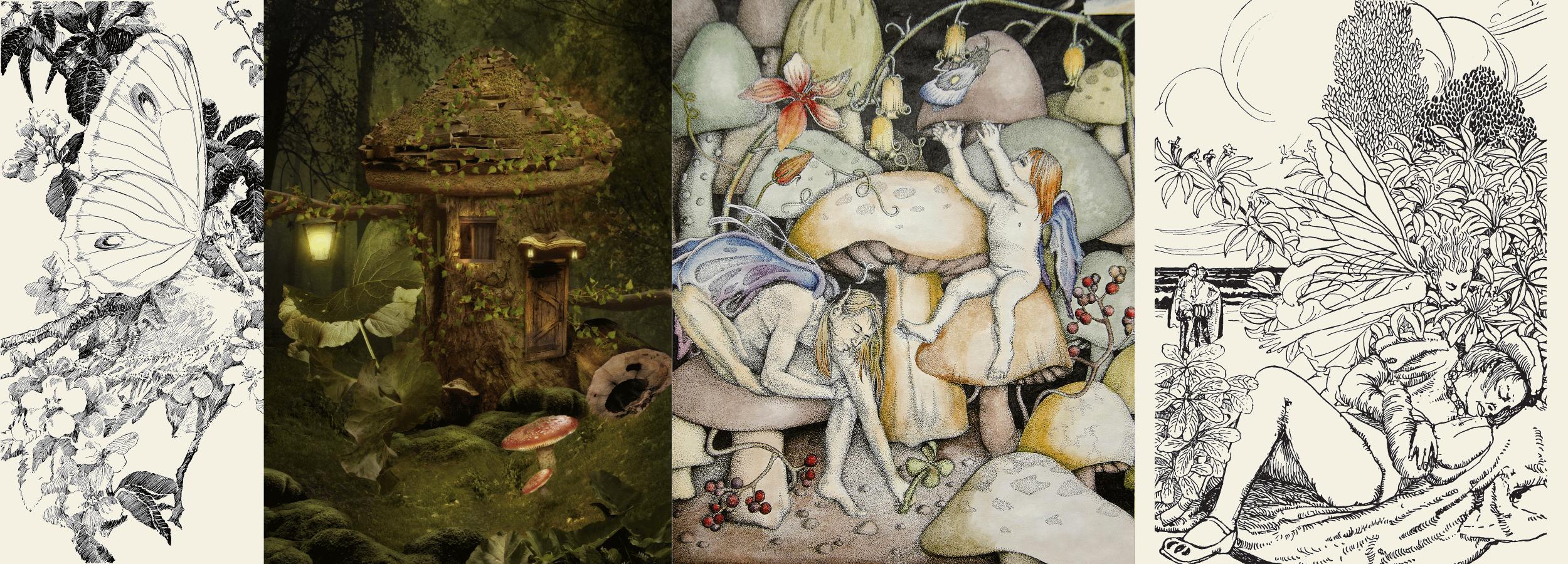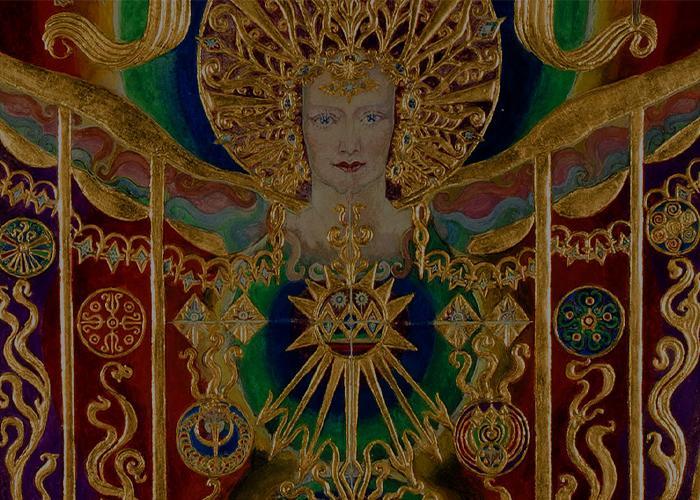If you've ever been for a stroll through a sunlit glade and marvelled at the magic of nature, then you are already acquainted with nature spirits. And if you have not yet met them, well, you are in for an enchanting journey! Nature spirits and plant spirits are very much a part of our world. They inhabit the flora, minerals and elements. Furthermore, these etheric beings are very easy to recognise and connect with once you know what you're looking or sensing for. You'll find that developing a relationship with nature spirits certainly brings a magical dimension to your nature walks!

Types of nature spirit
There are more varieties of nature spirits and plant spirits than we can possibly list in this article. Every culture has its own variation and interpretation of nature spirits, and there are a LOT. To start with, here are just a few types of nature spirit that you may have come across:
What is a faery?
No list of nature spirits is complete without a nod to our dear faeries. In fact, you are probably familiar with this type of nature spirit from your childhood storybooks. For those who care to open their mind and senses, faeries are very much a part of our natural world. These ethereal creatures inhabit the plants, flowers and trees. Often depicted as tiny, ephemeral beings with wings, faeries are thought to be mischievous. However, they are also helpful to those who respect and honour nature. If you are kind to the natural world, you will encounter no mischief from these nature spirits! The first president of The College of Psychic Studies, Sir Arthur Conan Doyle, was a huge champion of faeries. In fact, there are a few prints of the Cottingley Faeries in his former office at the College. You can admire them during the College's regular exhibitions.

What is a plant deva?
Plant devas are nature spirits that inhabit plants, flowers and other forms of vegetation. They are said to be responsible for the growth, health, and well-being of flora, and are considered to play an important role in maintaining the balance of nature. The concept of plant devas is rooted in various mystical traditions around the world, including indigenous beliefs, Hinduism and Buddhism. In these ancient traditions, plant devas are often depicted as etheric beings, invisible to the human eye but perceivable through heightened states of awareness or through certain practices or the use of particular substances and plant medicines. Also known as plant totems, and plant angels, they are thought to embody the qualities and characteristics of the plant or tree they are associated with, and may be called upon for guidance, protection, or healing.
What is an elemental?
The four elements of Earth, Air, Water and Fire are governed by a type of nature spirit known as an elemental. The elementals are believed to inhabit various aspects of the natural world, and are thought to have the ability to control or influence the elements. If it's a rainy day, the water elementals are out in full force! According to the 16th-century Swiss physician and alchemist, Paracelsus, there are four kinds of elemental:
- Gnomes: It's no coincidence that we have garden gnomes. Gnomes are the elementals that protect the Earth.
- Undines: Undines are the elementals that protect the water.
- Sylphs: Sylphs are the elementals that protect the air.
- Salamanders: Salamanders are the elementals associated with fire.
What Is a nymph?
A nymph is a supernatural being that is associated with a particular location or natural element. Some are connected with water and soil, while others are found in mountains, forests and meadows. Nymphs are often depicted as beautiful women, and are believed to possess magical powers and the ability to communicate with us humans. There are many different types of nymphs, each associated with a different aspect of nature. For example:
- Naiads: Naiads are nymphs of fresh water, such as rivers, lakes, and springs.
- Oreads: Oreads are nymphs of mountains and rocky places.
- Dryads: Dryads are nymphs of trees, particularly oak trees.
- Nereids: Nereids are nymphs of the sea, and are often depicted as riding on the backs of dolphins or other sea creatures.
Nymphs were often worshipped in ancient Greece as powerful and benevolent spirits that could bring fertility, prosperity, and protection to the land and its inhabitants. They were also believed to have the power to curse those who angered them or disrespected their domains. In later mythology and literature, nymphs continued to be a popular theme, often appearing as romantic or magical figures in poetry, art, and storytelling.
What is a dryad?
As mentioned above as a kind of nymph, dryads are the spirits of trees, particularly oak trees. The term 'dryad' comes from the Greek word 'drýs', which means 'oak tree'. In Greek mythology, dryads were typically depicted as beautiful young women who lived within their unique trees. Each dryad is born with her tree and lives only as long as the tree does. Dryads can be shy creatures and often hide from humans or other creatures that threaten their trees. However, they are committed to protecting their tree, and often communicate with those who honour and respect it.
Of course, these different types of nature spirits are often described differently across various cultures and spiritual traditions. The beliefs and practices associated with plant spirits also vary widely, depending on the individual or community that holds them.
How to connect with nature spirits
If you have a favourite tree that you often talk to, or you sometimes sense faeries around you on your nature walk, then you are already connecting with nature spirits. Here are a few ideas that can help you nurture that connection and start communicating with nature spirits on a deeper level.
- Practice meditation or visualisation: Meditation and visualisation can be powerful tools for connecting with nature spirits. Find a peaceful spot to sit quietly in nature, or settle in a space where you can focus on an image or representation of a nature spirit. Visualise yourself connecting with the spirit, and ask for guidance or wisdom. Nicholas Pearson will show you how to do it in his online plant spirit workshop.
- Spend time in nature: One of the best ways to connect with nature spirits and plant spirits is to spend time in nature, surrounded by plants and trees. Take a walk in the woods or a park, sit under a tree, or spend time in your garden. Try to be present and mindful of the natural world around you, and observe the plants and trees with curiosity and reverence.
- Use plant medicine: Many plant medicines, such as herbs, essential oils, and flower essences, are believed to carry the energetic properties and wisdom of the plants they come from. Working with these medicines can be a powerful way to connect with plant spirits and access their healing properties.
- Create a plant altar: Setting up a special altar or sacred space in your home or garden can be a powerful way to honour and connect with plant spirits. Include representations of plants or plant spirits that are meaningful to you, such as statues, crystals, or dried herbs. Spend time at your altar each day, offering gratitude and reverence to the plants and spirits.
- Study plant folklore and mythology: Learning about the folklore and mythology associated with different plants and plant spirits can deepen your understanding and connection to them. Read books, watch documentaries, or seek out teachings from spiritual teachers or elders who have a deep knowledge of plant spirits and their traditions.
Connecting with nature spirits is a very personal and highly intuitive practice. What works for one person may not work for another. Follow your own instincts and listen to your intuition as you explore this spiritual path.
Join our newsletter to receive updates on our spiritual events.




